Nutrients Important for Eye Health
According to the World Health Organization, over 2.2 billion people globally experience vision impairment or blindness. Eye health is crucial for quality of life, yet many eye diseases, such as glaucoma and age-related macular degeneration, progress silently and are detected too late for effective intervention. With the global rise in preventable vision loss, understanding the vital nutrients that support eye health is essential to protecting and preserving sight throughout life.
1. Vitamin A

Vitamin A is essential for maintaining the normal function of the retina, particularly in the conversion of light into electrical signals—a process vital for vision. It forms a component of the protein rhodopsin, which photoreceptor cells in the retina use to absorb light. Deficiency in vitamin A can lead to impaired production of rhodopsin, resulting in night blindness, which is especially prevalent in regions where diets lack animal products or vitamin A-rich foods. According to the National Institutes of Health, early symptoms of deficiency include difficulty seeing in low light, dryness of the eyes, and frequent eye infections.
To recognize early signs, individuals should be mindful of any sudden changes in night vision or persistent eye discomfort. Addressing these symptoms promptly can help prevent further deterioration. Dietary sources of vitamin A include liver, dairy products, eggs, and plant-based sources rich in beta-carotene such as carrots, sweet potatoes, and leafy greens. Incorporating these foods into daily meals can significantly reduce the risk of deficiency and support overall eye health. For more information about dietary recommendations, visit the CDC’s nutrition resources.
2. Lutein

Lutein is a powerful antioxidant that plays a critical role in protecting the macula, the central part of the retina responsible for detailed vision. By filtering harmful blue light and neutralizing free radicals, lutein helps preserve the integrity of retinal cells and may reduce the risk of age-related macular degeneration (AMD). Studies have shown that individuals with higher macular pigment optical density, often due to greater lutein intake, tend to have lower rates of macular degeneration and other vision problems compared to those with lower dietary lutein consumption. For instance, populations consuming diets rich in leafy greens and other colorful vegetables generally exhibit healthier macular pigment levels and stronger visual function, as reported by the National Institutes of Health.
Leafy green vegetables such as spinach, kale, and collard greens are among the best natural sources of lutein. Including these vegetables regularly in meals can help increase macular pigment density and provide ongoing protection against oxidative stress in the eyes. For more information on the benefits of lutein and dietary recommendations, visit the American Academy of Ophthalmology.
3. Zeaxanthin
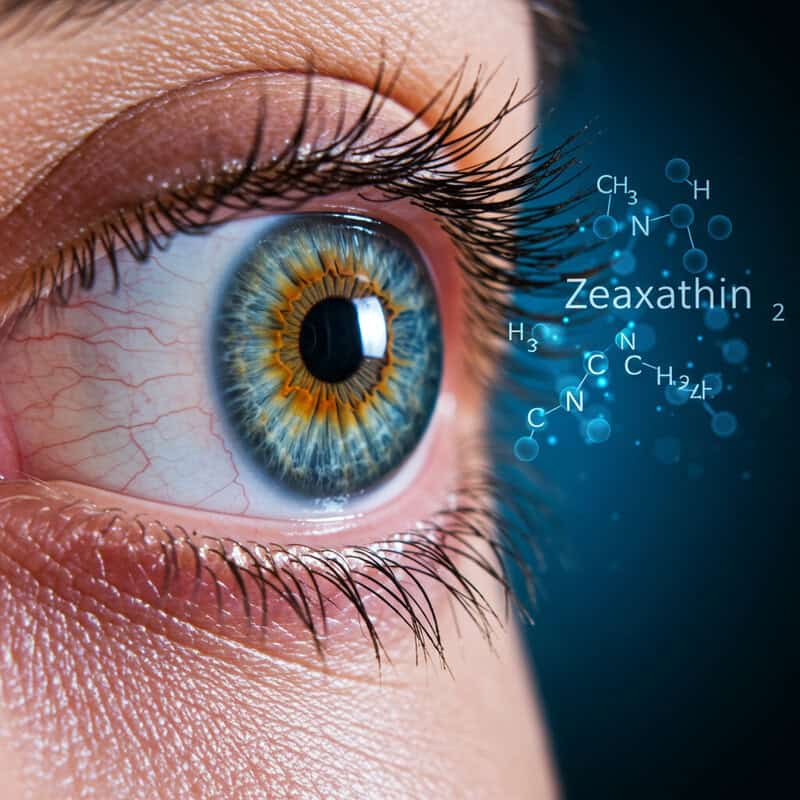
Zeaxanthin is a vital carotenoid found in high concentrations within the macula, where it functions alongside lutein to shield retinal tissues from light-induced oxidative damage. By filtering out harmful blue light and neutralizing reactive oxygen species, zeaxanthin helps prevent the degeneration of photoreceptor cells, thereby supporting long-term visual acuity and reducing the risk of age-related macular degeneration (AMD). Research published by the National Institutes of Health emphasizes the importance of maintaining adequate zeaxanthin levels for optimal macular protection.
Corn and egg yolks are among the richest dietary sources of zeaxanthin, making them excellent additions to a vision-supportive diet. Other sources include orange peppers, goji berries, and certain leafy greens. Regular consumption of zeaxanthin-rich foods can increase macular pigment density, providing a natural defense against the cumulative effects of light exposure. For individuals looking to support their macular health, including corn-based dishes, eggs, and colorful vegetables in daily meals is highly recommended. To learn more about zeaxanthin’s benefits and how to incorporate it into a diet, refer to the All About Vision nutrition guide.
4. Vitamin C

Vitamin C is a crucial nutrient for eye health due to its role in the synthesis of collagen, a structural protein that supports the integrity of ocular blood vessels and other connective tissues in the eye. By promoting healthy blood vessel walls and maintaining the cornea’s structure, vitamin C contributes to overall visual function and resilience against disease. Moreover, as a potent antioxidant, vitamin C helps protect the eye from oxidative stress and free radical damage, both of which are implicated in the development of cataracts and other age-related eye conditions.
Numerous studies, including findings from the National Institutes of Health, have demonstrated a correlation between higher vitamin C intake and a reduced risk of cataract formation. This protective effect is attributed to vitamin C’s ability to regenerate other antioxidants within the eye and prevent lens protein oxidation. To ensure adequate intake, it is recommended to consume a variety of fruits and vegetables daily, with particular emphasis on citrus fruits, strawberries, bell peppers, broccoli, and kiwi. For additional dietary guidance and research on vitamin C’s benefits for eye health, consult the American Academy of Ophthalmology.
5. Vitamin E

Vitamin E is a fat-soluble antioxidant that plays a significant role in protecting the eye’s delicate cell membranes from oxidative damage caused by free radicals. This nutrient is particularly important for safeguarding the lipid-rich areas of the retina, where oxidative stress can contribute to cellular degeneration and impaired vision. As a result, vitamin E is recognized for its potential to slow the progression of age-related eye diseases, such as cataracts and age-related macular degeneration (AMD).
According to data from the National Institutes of Health, populations with higher dietary intake of vitamin E have demonstrated lower rates of AMD and cataract development when compared to those with insufficient intake. This protective effect underscores the importance of vitamin E as part of a holistic approach to long-term eye health. Nuts and seeds, such as almonds, sunflower seeds, and hazelnuts, are among the richest sources of vitamin E, while vegetable oils and avocados also contribute beneficial amounts. Incorporating a variety of these foods into the diet is recommended to meet daily vitamin E requirements. For more information on vitamin E and eye health, visit the American Academy of Ophthalmology.
6. Zinc
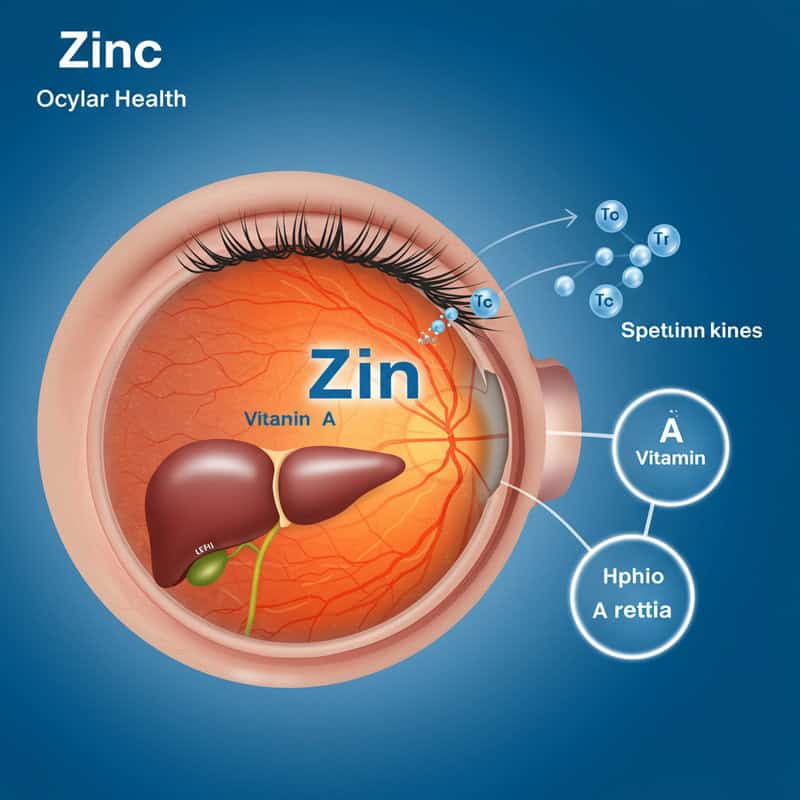
Zinc is a vital trace mineral involved in numerous aspects of ocular health, most notably in the transportation of vitamin A from the liver to the retina, where it is converted into melanin, a protective pigment in the eyes. This process is essential for maintaining night vision and overall retinal health. Zinc also plays a key role in the function of over 300 enzymes that support cellular repair and reduce inflammation within ocular tissues.
Research, including the landmark Age-Related Eye Disease Study (AREDS) conducted by the National Eye Institute, has demonstrated that adequate zinc intake can significantly slow the progression of age-related macular degeneration (AMD), particularly in individuals at high risk of advanced disease. These findings highlight zinc as a critical nutrient for long-term visual preservation.
Dietary sources of zinc include oysters, beef, poultry, beans, nuts, whole grains, and dairy products. Consuming a varied diet that incorporates these foods helps ensure sufficient zinc levels to support eye health and optimize the benefits of vitamin A. For further information on zinc and its role in eye health, visit the National Institutes of Health Office of Dietary Supplements.
7. Omega-3 Fatty Acids

Omega-3 fatty acids, particularly docosahexaenoic acid (DHA) and eicosapentaenoic acid (EPA), are integral components of retinal cell membranes, where they help maintain fluidity, function, and resilience against oxidative stress. DHA is especially abundant in the retina and supports photoreceptor development as well as ongoing visual processing. EPA, while less concentrated in the eye, plays a complementary anti-inflammatory role, contributing to overall ocular health.
Numerous studies have indicated that populations with diets high in fatty fish—such as salmon, sardines, and mackerel—enjoy a significantly lower prevalence of dry eye syndrome and may experience slower progression of certain retinal diseases. The National Institutes of Health highlights that regular omega-3 consumption is linked to improved tear production, reduced inflammation, and enhanced protection of retinal cells.
To incorporate more omega-3s, consider meal planning strategies such as including two servings of fatty fish per week, adding flaxseeds or chia seeds to breakfast, and using canola or walnut oil in cooking. For individuals who do not consume fish, algae-based supplements can provide plant-derived DHA and EPA. More tips and research are available from the American Academy of Ophthalmology.
8. Beta-Carotene
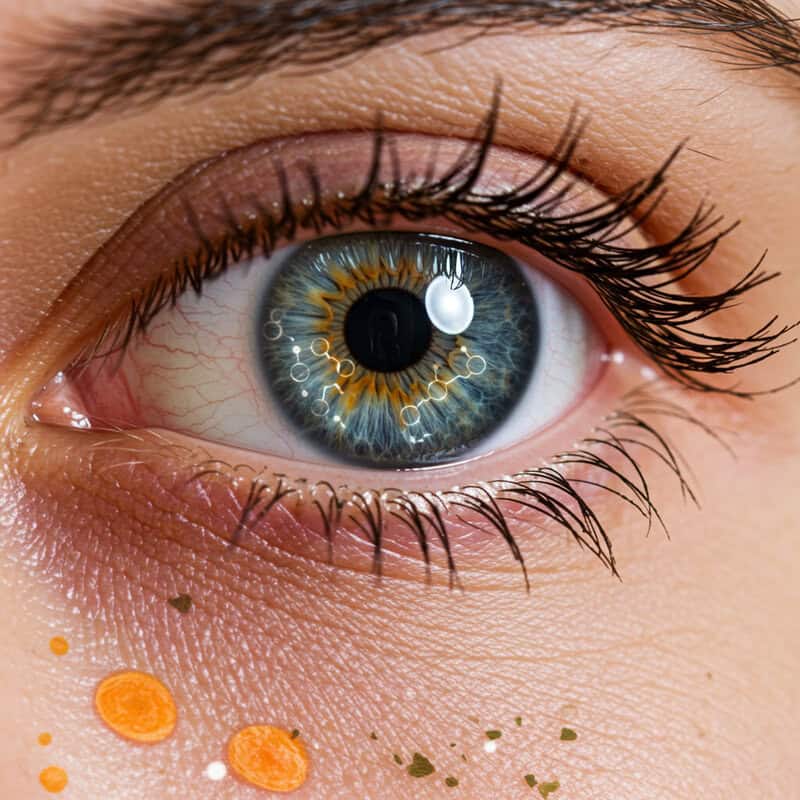
Beta-carotene is a carotenoid and a potent antioxidant that serves as a precursor to vitamin A, meaning the body can convert it into active vitamin A as needed. This conversion is vital for maintaining healthy vision, particularly in supporting the function of the retina and preventing conditions such as night blindness and xerophthalmia. Populations with diets high in beta-carotene-rich foods have consistently shown lower rates of vitamin A deficiency and related eye disorders.
Comparative studies, such as those referenced by the National Institutes of Health, reveal that regions where orange-colored fruits and vegetables are dietary staples experience far fewer cases of preventable visual impairment than areas with low fruit and vegetable consumption. In these high-intake regions, foods like carrots, sweet potatoes, pumpkin, mangoes, and cantaloupe are central to daily meals, providing a reliable source of beta-carotene and supporting long-term eye health.
To boost beta-carotene intake, individuals are encouraged to incorporate a colorful variety of orange and yellow produce into their diets. Roasting, steaming, or blending these vegetables and fruits into soups, salads, and smoothies can enhance both absorption and palatability. For more information, visit the All About Vision nutrition resource.
9. Vitamin D

Vitamin D is increasingly recognized for its role in immune system regulation, which extends to the eyes by modulating inflammatory responses and helping maintain immune tolerance in ocular tissues. Adequate vitamin D levels may protect against inflammatory eye conditions, including uveitis—a serious disorder that can damage the eye’s structures and impair vision if left untreated.
Several studies, including those highlighted by the National Institutes of Health, have found a higher prevalence of uveitis and other inflammatory eye diseases in individuals with vitamin D deficiency. These findings suggest that maintaining optimal vitamin D status is important for reducing the risk of chronic or recurrent eye inflammation and for supporting the overall health of the visual system.
One of the most effective ways to boost vitamin D levels is through sensible sunlight exposure, as the skin produces vitamin D in response to ultraviolet B (UVB) rays. Short periods (about 10-30 minutes) of midday sun exposure to the face, arms, and legs several times per week can be sufficient for many people, depending on skin type and location. For more information on vitamin D and eye health, visit the American Academy of Ophthalmology.
10. Selenium

Selenium is an essential trace mineral that acts as a crucial component of antioxidant enzymes such as glutathione peroxidase. These enzymes help protect ocular tissues from oxidative damage by neutralizing free radicals and reducing cellular stress, which is particularly important for preserving the health of the lens and retina. Selenium’s antioxidant properties are thought to play a role in decreasing the risk of cataracts and age-related macular degeneration (AMD).
Soil selenium content greatly varies by geographic region, and studies have shown that populations living in areas with selenium-rich soil tend to have better overall eye health outcomes. Conversely, regions with low soil selenium levels often report a higher prevalence of oxidative stress-related eye diseases, underscoring the importance of sufficient selenium intake through the diet. According to the National Institutes of Health, maintaining adequate selenium status is vital for supporting antioxidant defenses in the eyes.
Brazil nuts are among the richest natural sources of selenium, with just one or two nuts providing the recommended daily intake. Other good sources include seafood, such as tuna and sardines, as well as eggs and whole grains. For more information, see the All About Vision guide to selenium and eye health.
11. Copper

Copper is a vital trace mineral involved in numerous biological processes within the body, including the synthesis of melanin—a pigment that helps protect the eye by absorbing light and shielding against oxidative damage. In the eye, melanin plays a significant role in maintaining retinal health and reducing the risk of damage from ultraviolet (UV) and high-energy visible light. Copper also supports the function of antioxidant enzymes, such as superoxide dismutase, which help neutralize harmful free radicals in ocular tissues.
Imbalances in copper levels, whether due to deficiency or excess, can have serious implications for eye health. Certain inherited conditions, such as Wilson’s disease and Menkes disease, cause abnormal copper metabolism and are associated with distinctive ocular manifestations, including the characteristic Kayser-Fleischer rings in Wilson’s disease. These cases highlight the importance of maintaining balanced copper levels for proper eye function. The National Institutes of Health emphasizes that both copper deficiency and toxicity can negatively impact vision and neurological health.
Whole grains, legumes, nuts, seeds, and shellfish are excellent dietary sources of copper. Including a variety of these foods in the diet helps ensure adequate copper intake to support melanin production and overall eye health. For more details, visit the All About Vision copper nutrition guide.
12. Riboflavin (Vitamin B2)
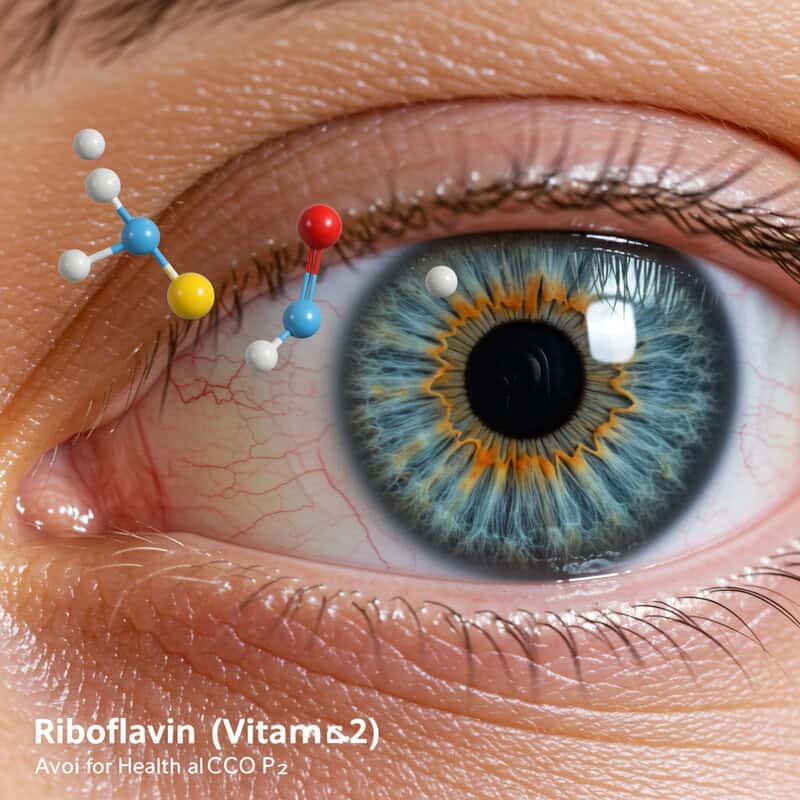
Riboflavin (Vitamin B2) plays a crucial role in maintaining ocular health by supporting energy production and acting as a cofactor for antioxidant enzymes that help prevent oxidative stress in the lens. This function is particularly important because oxidative damage to lens proteins is a major contributor to the development of cataracts, which cloud vision and are a leading cause of treatable blindness worldwide.
Scientific research, including a study published by the National Institutes of Health, indicates that populations with riboflavin-deficient diets are at a significantly higher risk of developing cataracts compared to those with adequate vitamin B2 intake. Deficiency can lead to increased oxidative stress, accelerating the clouding of the lens and impairing vision over time.
Dairy products, such as milk, yogurt, and cheese, along with eggs, are excellent and readily available sources of riboflavin. Other good sources include lean meats, green leafy vegetables, nuts, and enriched cereals. Regularly incorporating these foods into the diet can help ensure sufficient riboflavin intake and provide a protective effect against cataract formation. For further dietary recommendations, visit the NIH Office of Dietary Supplements.
13. Niacin (Vitamin B3)

Niacin (Vitamin B3) is an essential water-soluble vitamin that plays a significant role in supporting the health of ocular blood vessels and overall cellular metabolism within the eye. It acts as a precursor for coenzymes NAD and NADP, which are necessary for energy production and the maintenance of healthy tissue, including the sensitive vascular structures that supply the retina and optic nerve.
Deficiency in niacin has been associated with an increased risk of developing glaucoma, a condition characterized by damage to the optic nerve often due to compromised blood flow and increased intraocular pressure. Research, such as that referenced by the National Institutes of Health, suggests that adequate niacin intake may help protect against the onset and progression of glaucoma, as well as support overall eye function and resilience.
To support optimal niacin status, individuals are encouraged to consume foods rich in vitamin B3, such as fortified cereals and poultry (including chicken and turkey). Additional sources include tuna, peanuts, mushrooms, and legumes. Incorporating a mix of these foods into the diet can help ensure sufficient niacin intake for vascular and eye health. For more details, visit the NIH Office of Dietary Supplements.
14. Thiamine (Vitamin B1)
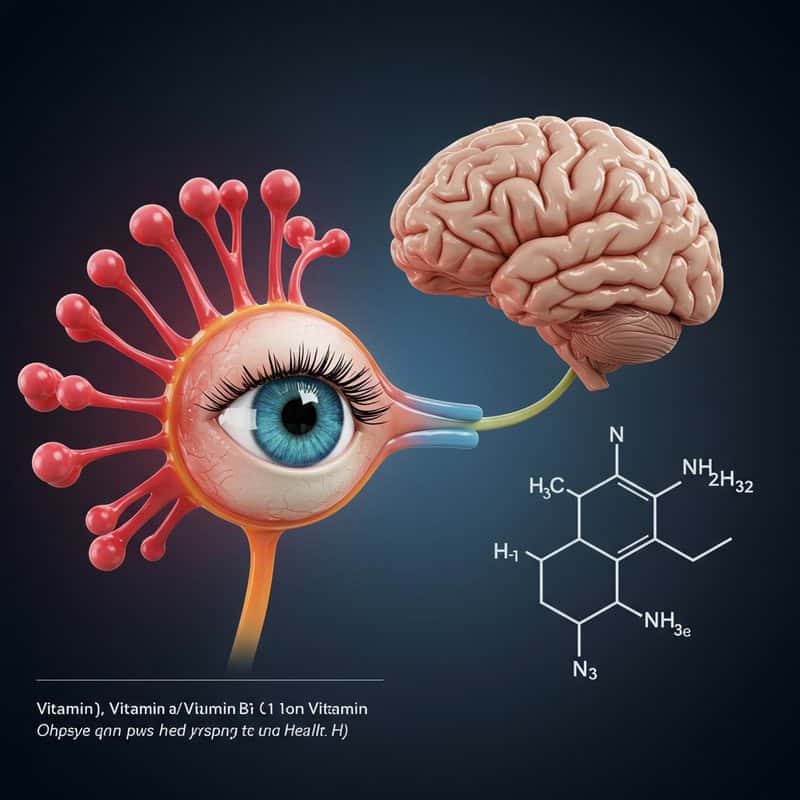
Thiamine (Vitamin B1) is an essential B-vitamin known for its neuroprotective effects, particularly in the maintenance of healthy nerve function, including that of the optic nerve. Thiamine is a coenzyme involved in energy metabolism and the transmission of nerve impulses, both of which are critical for the functioning of visual pathways from the eye to the brain. By supporting these processes, thiamine helps protect against optic neuropathy and other degenerative changes that can impair vision.
Studies, including those cited by the National Institutes of Health, have shown that thiamine deficiency is associated with a higher incidence of visual complaints, such as blurred vision, double vision, and, in severe cases, optic nerve damage. Individuals with chronic low intake of thiamine, especially those with certain medical or dietary challenges, are at increased risk for these symptoms.
Whole grain foods, such as brown rice, whole wheat bread, oats, and fortified cereals, are excellent dietary sources of thiamine. Other sources include legumes, nuts, and seeds. Regular consumption of these foods helps maintain adequate thiamine levels, supporting both neurological and ocular health. For further information, visit the NIH Office of Dietary Supplements.
15. Pyridoxine (Vitamin B6)
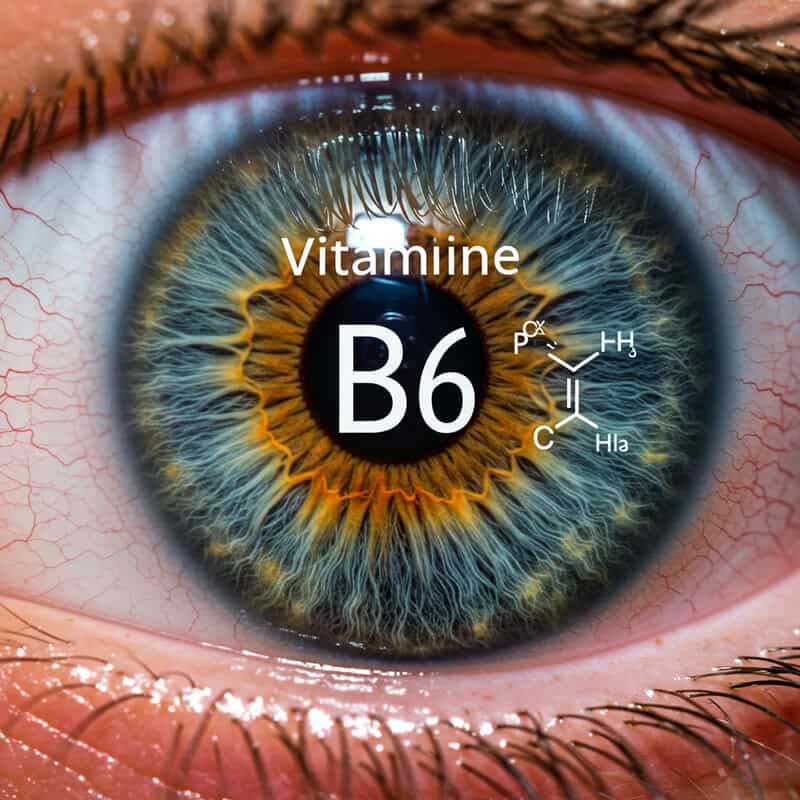
Pyridoxine (Vitamin B6) is an essential nutrient that plays a pivotal role in amino acid metabolism, including the regulation of homocysteine levels in the body. Elevated homocysteine has been associated with impaired retinal blood flow and an increased risk of vascular-related eye diseases, such as age-related macular degeneration (AMD) and retinal vein occlusion. Vitamin B6 helps convert homocysteine into other beneficial compounds, thereby protecting the delicate blood vessels that nourish the eye.
Comparative studies, such as those referenced by the National Institutes of Health, have demonstrated that populations with higher dietary intake of vitamin B6 tend to have lower incidences of eye disease linked to vascular dysfunction. This suggests that adequate B6 intake may play a protective role in maintaining retinal health and supporting optimal blood flow to ocular tissues.
Chickpeas are one of the best dietary sources of vitamin B6, providing a substantial portion of the daily requirement in just one serving. Other good sources include fish, poultry, potatoes, bananas, and fortified cereals. Regularly incorporating these foods into meals can help maintain healthy homocysteine levels and support long-term eye health. For more details, visit the NIH Office of Dietary Supplements.
16. Folate (Vitamin B9)

Folate (Vitamin B9) is a water-soluble B-vitamin that plays a fundamental role in DNA synthesis, repair, and cell division. These processes are vital for the rapid turnover of cells within ocular tissues, particularly in the retina and the corneal epithelium, where healthy cell regeneration supports visual clarity and eye surface integrity. Folate’s contribution to proper cell function is also crucial during periods of growth and development, making it especially important for pregnant women to prevent congenital ocular and neural tube defects.
Scientific literature, including reviews by the National Institutes of Health, has highlighted the association between maternal folate status and fetal eye as well as neural tube development. Folate deficiency during pregnancy is linked not only to neural tube defects but also to abnormalities in eye formation, underlining the importance of this nutrient across the lifespan.
Leafy green vegetables such as spinach, kale, and romaine lettuce are among the richest natural sources of folate. Other good sources include legumes, asparagus, avocados, and fortified grains. Regular consumption of these foods helps ensure adequate folate intake to support DNA synthesis, healthy eye cell turnover, and proper development. For more information, visit the NIH Office of Dietary Supplements.
17. Cobalamin (Vitamin B12)

Cobalamin (Vitamin B12) is an essential B-vitamin critical for the maintenance of healthy nerve cells, including those that form the optic nerve responsible for transmitting visual information from the eye to the brain. B12 is involved in the synthesis of myelin, the protective sheath surrounding nerve fibers, which ensures the rapid and efficient conduction of nerve impulses crucial for clear vision and coordinated eye movements.
Numerous studies, such as those referenced by the National Institutes of Health, have found that vitamin B12 deficiency is associated with optic neuropathy and progressive vision loss, particularly in older adults and individuals with malabsorption disorders. Symptoms of deficiency may include blurred or disturbed vision, which, if left untreated, can become irreversible.
To support optimal optic nerve health, it is important to consume adequate amounts of vitamin B12 from dietary sources. Eggs, fish (such as salmon and tuna), dairy products, and fortified cereals are excellent food choices for meeting B12 requirements. Individuals following a vegan or vegetarian diet may need to rely on fortified foods or supplements to prevent deficiency. For more information, visit the NIH Office of Dietary Supplements.
18. Lycopene

Lycopene is a potent carotenoid antioxidant found predominantly in red and pink fruits and vegetables, most notably in tomatoes. Its strong antioxidant capacity enables it to neutralize free radicals and reduce oxidative stress in ocular tissues, including the retina and lens. This protective effect is thought to help lower the risk of age-related macular degeneration (AMD) and cataracts, both of which are associated with cumulative oxidative damage over time.
Comparative studies, including those referenced by the National Institutes of Health, indicate that populations with tomato-rich diets tend to exhibit lower rates of AMD and other degenerative eye diseases. The bioavailability of lycopene is enhanced when tomatoes are cooked or processed, as cooking breaks down cell walls and allows for greater absorption of this nutrient.
For optimal eye health benefits, it is recommended to incorporate cooked tomato products—such as tomato sauce, paste, or stewed tomatoes—into meals regularly. Other sources of lycopene include watermelon, pink grapefruit, and guava. Making these foods a staple in the diet can contribute to the antioxidant defenses of the eyes. For more information, visit the All About Vision guide to lycopene and eye health.
19. Flavonoids

Flavonoids are a diverse group of plant compounds known for their powerful antioxidant and anti-inflammatory properties, which offer significant vascular benefits for the retina. By strengthening capillary walls and enhancing blood flow, flavonoids help maintain optimal oxygen and nutrient delivery to delicate retinal tissues, supporting overall retinal function and resilience against oxidative stress and inflammation. These effects are crucial for protecting against age-related macular degeneration (AMD), diabetic retinopathy, and other vision-threatening conditions.
Research, such as that referenced by the National Institutes of Health, has highlighted the positive association between flavonoid-rich diets and eye health. Specifically, regular consumption of tea—both green and black—and berries like blueberries, blackberries, and strawberries has been linked to improved retinal blood vessel health and a lower incidence of degenerative eye diseases.
To harness the eye-protective benefits of flavonoids, it is advisable to include a variety of colorful fruits and vegetables, such as citrus fruits, cherries, and dark leafy greens, alongside daily servings of tea. These habits can help ensure a rich intake of flavonoids to support long-term vascular and retinal health. For more information, visit the All About Vision dietary guide.
20. Anthocyanins
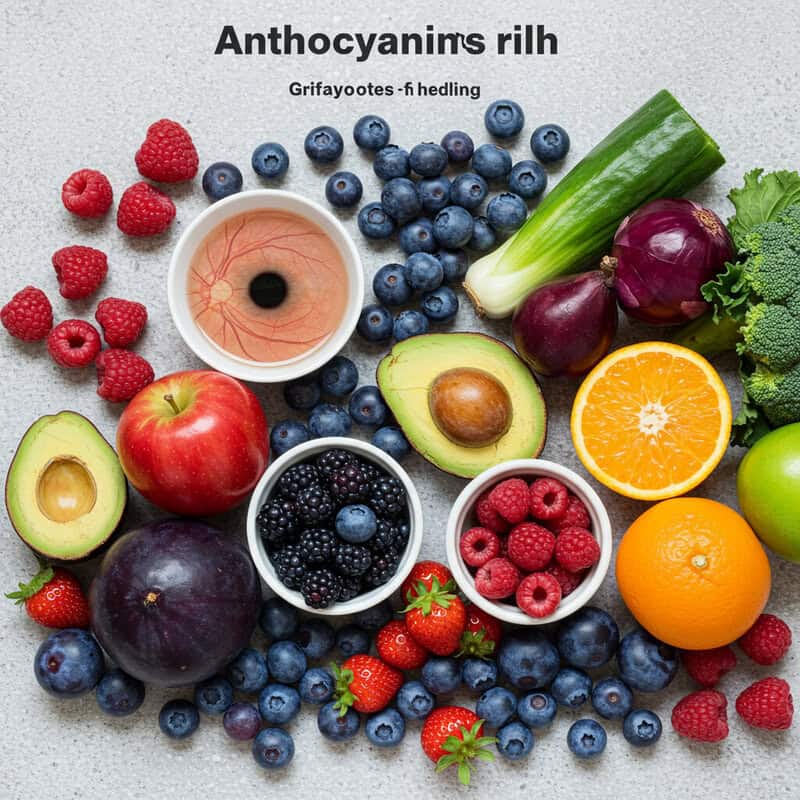
Anthocyanins are a class of flavonoids responsible for the deep blue, purple, and red hues in many fruits and vegetables. Their notable anti-inflammatory and antioxidant properties help protect ocular tissues from oxidative stress and inflammation, both of which are implicated in the development of age-related eye diseases. Anthocyanins have been shown to stabilize collagen in the eye and improve the microcirculation of blood in the retina, enhancing overall visual function.
Research highlighted by the National Institutes of Health has emphasized the beneficial link between blueberry consumption and improved night vision, as well as faster adaptation to darkness. This is likely due to anthocyanins’ ability to support the regeneration of rhodopsin, a pigment necessary for vision in low-light conditions. Regular intake of anthocyanin-rich foods has also been associated with a reduced risk of retinal degeneration and vascular complications in the eye.
To maximize the eye-protective effects of anthocyanins, include dark berries such as blueberries, blackberries, and elderberries as snacks or meal additions. These fruits can be enjoyed fresh, frozen, or blended into smoothies for a nutritious and vision-supportive treat. For more information, visit the All About Vision guide on anthocyanins and eye health.
21. Taurine

Taurine is a sulfur-containing amino acid found in high concentrations within the retina, where it plays a crucial role in stabilizing cell membranes, regulating calcium transport, and protecting photoreceptor cells from oxidative damage. Taurine is considered one of the most abundant free amino acids in the retina, making it essential for maintaining the structural and functional integrity of retinal cells.
Animal model studies, as discussed in publications by the National Institutes of Health, have demonstrated that taurine deficiency can result in significant retinal degeneration and impaired visual function. In particular, rodents deprived of taurine exhibit photoreceptor cell loss and abnormalities in electroretinogram responses, underscoring the nutrient’s protective effect on the retina. Additional research suggests taurine’s involvement in modulating retinal neurotransmission and reducing oxidative stress, further supporting its role in eye health.
Seafood, such as shellfish and fish, are naturally rich sources of taurine. Additionally, some energy drinks are fortified with taurine, though moderation is advised due to their caffeine and sugar content. Incorporating seafood into the diet is a practical way to boost taurine intake. For more insights, visit the All About Vision guide on taurine and vision.
22. Glutathione
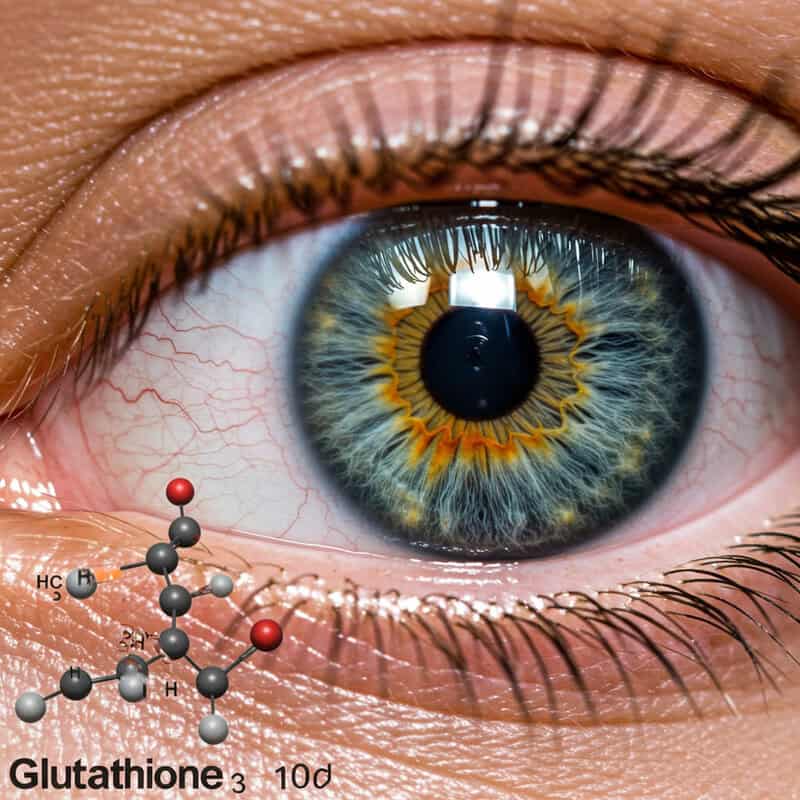
Glutathione is often referred to as the body’s “master antioxidant,” playing a pivotal role in preserving the clarity and function of the lens in the eye. It works by neutralizing free radicals, detoxifying harmful compounds, and regenerating other antioxidants within the eye’s tissues. Glutathione’s abundance in the lens is critical for preventing protein aggregation and oxidative damage, both of which are major contributors to cataract formation and the gradual clouding of the lens that impairs vision with age.
Research, including evidence summarized by the National Institutes of Health, has shown that individuals with lower glutathione levels in their lenses have a significantly higher risk of developing cataracts compared to those with higher levels. Maintaining and boosting glutathione concentrations in the eye is thus considered an important strategy for reducing cataract risk and supporting lifelong ocular health.
Sulfur-rich foods such as garlic, onions, cruciferous vegetables (like broccoli and Brussels sprouts), and eggs provide the building blocks necessary for glutathione synthesis. Including these foods regularly in the diet can help sustain adequate glutathione levels and contribute to the lens’s antioxidant defenses. For further information, visit the All About Vision resource on glutathione and eye health.
23. Vitamin K

Vitamin K is a fat-soluble vitamin best known for its crucial role in blood clotting, but it also significantly contributes to the health of blood vessels throughout the body, including those in the eye. Vitamin K is involved in the activation of proteins that help prevent vascular calcification and maintain the flexibility and integrity of blood vessel walls, which is essential for optimal retinal and choroidal blood flow. Proper blood supply is critical to nourishing the sensitive tissues of the eye and supporting visual function.
Emerging evidence, as reviewed by the National Institutes of Health, suggests that vitamin K deficiency may contribute to vascular calcification, which can impair ocular blood flow and increase the risk of diseases such as age-related macular degeneration (AMD) and diabetic retinopathy. Ensuring adequate vitamin K intake may therefore play a protective role in maintaining the microvascular health of the eye and reducing the risk of vision loss due to compromised circulation.
Green leafy vegetables like kale, spinach, collard greens, and Swiss chard are among the best natural sources of vitamin K. Regularly including these vegetables in the diet can help support healthy blood vessels in the eye and overall vascular wellness. For more information, visit the NIH Office of Dietary Supplements.
24. Iron

Iron is a vital mineral necessary for the production of hemoglobin, the protein responsible for transporting oxygen from the lungs to all body tissues, including the highly metabolic structures of the eye. Adequate oxygen supply is crucial for retinal and optic nerve function, supporting clear vision and reducing the risk of cellular damage due to hypoxia (low oxygen levels). Iron also plays a role in enzymatic reactions involved in energy production within ocular tissues.
Anemia, which results from iron deficiency, can lead to a variety of visual changes, including blurred vision, pale conjunctiva, and, in severe cases, optic nerve dysfunction. Studies referenced by the National Institutes of Health have documented visual disturbances and increased susceptibility to retinal and optic nerve problems in individuals with chronic anemia. Addressing iron deficiency is therefore essential for both systemic and ocular health.
Dietary sources of iron include red meat, poultry, fish, lentils, beans, tofu, spinach, and fortified cereals. Consuming vitamin C-rich foods alongside plant-based iron sources can enhance absorption. Ensuring a balanced, iron-rich diet helps maintain optimal oxygen delivery to the eyes and supports overall visual function. For more information, visit the NIH Office of Dietary Supplements.
25. Magnesium
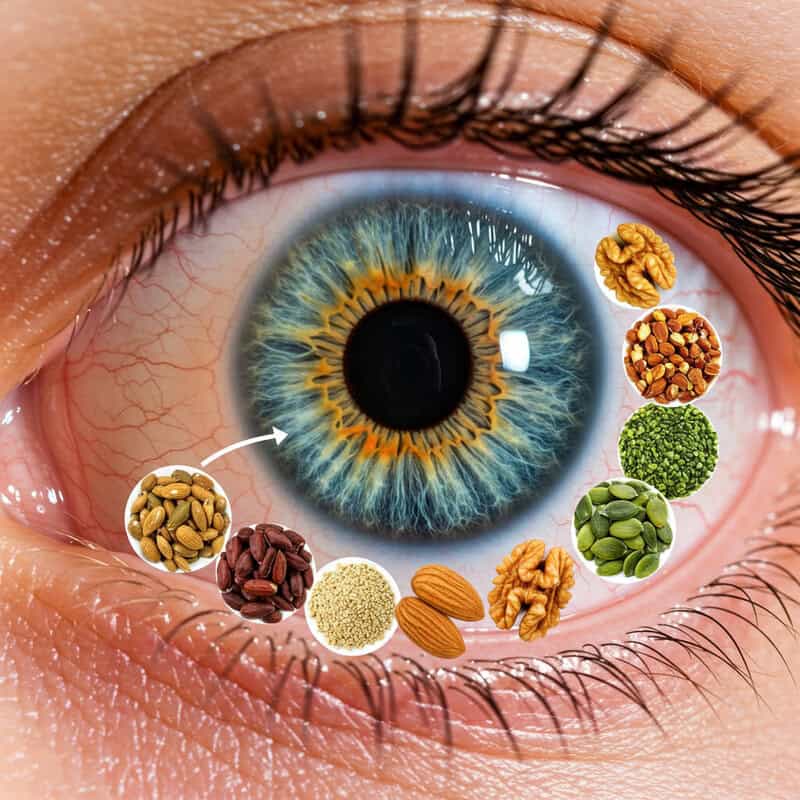
Magnesium is an essential mineral that plays a critical role in regulating vascular tone and supporting proper blood flow throughout the body, including in the retina and other delicate ocular tissues. By facilitating smooth muscle relaxation in blood vessel walls, magnesium helps maintain optimal retinal perfusion, ensuring a steady supply of oxygen and nutrients to the eye. It is also involved in over 300 biochemical reactions, including those that support nerve transmission and muscle function in the eyelids and surrounding structures.
Magnesium deficiency has been linked to a range of neuromuscular symptoms, with one of the most recognizable being eyelid twitching (myokymia). While usually benign, persistent twitching can indicate inadequate magnesium intake. Research summarized by the NIH Office of Dietary Supplements highlights the broader importance of magnesium for vascular health and the prevention of microvascular and neuro-ophthalmic complications.
Good dietary sources of magnesium include nuts (such as almonds and cashews), seeds (such as pumpkin and sunflower seeds), whole grains, legumes, and leafy green vegetables. Incorporating these foods into daily meals helps meet magnesium needs, promotes healthy retinal blood flow, and may help alleviate minor eye twitching. For more information, visit the All About Vision guide on magnesium and eye health.
26. Vitamin B5 (Pantothenic Acid)

Vitamin B5 (Pantothenic Acid) is a water-soluble B-vitamin that plays a fundamental role in supporting cellular metabolism and the repair of eye tissues. As a key component of coenzyme A, vitamin B5 is essential for the synthesis and breakdown of fatty acids and carbohydrates, providing the energy needed for cell maintenance, regeneration, and response to injury in ocular structures such as the cornea and lens.
Dietary patterns that are low in vitamin B5 have been associated with slower tissue healing and increased risk of inflammation, while diets rich in this nutrient support efficient repair and maintenance of eye tissues. According to the National Institutes of Health, people who consume a varied diet, including a wide range of plant-based and animal-based foods, are less likely to experience deficiencies and are better equipped to maintain optimal eye health.
Avocados and mushrooms are excellent sources of vitamin B5 and can be easily incorporated into salads, sandwiches, and cooked dishes. Other good sources include whole grains, eggs, poultry, and sweet potatoes. Including these foods regularly in your diet helps ensure that your eyes receive the metabolic support and repair capacity they need. For more information, visit the All About Vision guide on vitamin B5 and eye health.
27. Biotin (Vitamin B7)

Biotin (Vitamin B7) is a water-soluble B-vitamin that plays an essential role in supporting healthy nerve function, including the nerves responsible for transmitting visual information from the eyes to the brain. Biotin acts as a coenzyme in the metabolism of fatty acids, amino acids, and glucose, helping to maintain the health of nerve cells and contributing to the optimal functioning of the visual system.
Although biotin deficiency is rare due to its wide availability in foods and synthesis by gut bacteria, when it does occur, it can lead to neurological symptoms, including visual disturbances such as blurred vision or, in severe cases, optic neuropathy. These rare visual symptoms are often accompanied by other signs like skin rashes, hair loss, and muscle weakness, as outlined by the NIH Office of Dietary Supplements. Prompt recognition and correction of biotin deficiency are important for restoring nerve and visual health.
Eggs (particularly yolks), nuts, and seeds are among the richest natural sources of biotin. Incorporating these foods, along with whole grains and legumes, into your daily diet can help ensure adequate biotin intake and support ongoing nerve and ocular health. For further information, visit the All About Vision resource on biotin and eye health.
28. Manganese

Manganese is a trace mineral that serves as a crucial cofactor for several antioxidant enzymes, such as manganese superoxide dismutase (MnSOD), which are vital in protecting ocular tissues from oxidative stress. These enzymes help neutralize free radicals generated during cellular metabolism in the retina and other parts of the eye, thereby reducing the risk of cellular damage that can lead to degenerative eye diseases.
Animal studies, as discussed in reviews by the National Institutes of Health, have demonstrated that manganese deficiency impairs antioxidant defense mechanisms in ocular tissues, resulting in increased vulnerability to oxidative injury and retinal degeneration. These studies underscore the importance of manganese in maintaining the structural and functional integrity of the eye, particularly under conditions of increased oxidative stress or aging.
Whole grains, such as brown rice, oats, and whole wheat bread, along with legumes like lentils and chickpeas, are excellent dietary sources of manganese. Nuts and leafy green vegetables also contribute beneficial amounts. Regular inclusion of these foods in the diet supports the body’s antioxidant systems and helps protect eye health over the long term. For more information, visit the NIH Office of Dietary Supplements.
29. Chromium
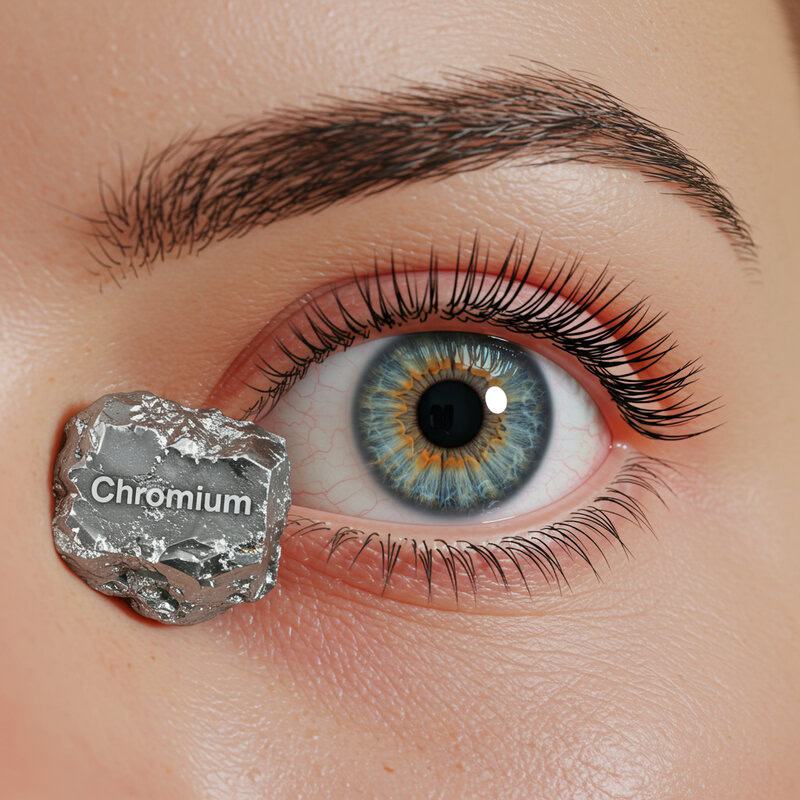
Chromium is a trace mineral known for its significant role in enhancing the action of insulin and supporting optimal glucose metabolism. Since the retina is highly sensitive to fluctuations in blood sugar, maintaining stable glucose levels is critical for preventing complications such as diabetic retinopathy, a leading cause of vision loss in adults. Chromium’s contribution to efficient carbohydrate metabolism helps reduce the risk of blood sugar spikes that can damage retinal blood vessels over time.
Studies cited by the NIH Office of Dietary Supplements have shown that populations with higher chromium intakes tend to have better glycemic control and a lower incidence of diabetic-related eye complications compared to those with inadequate chromium consumption. These findings emphasize the importance of chromium in the dietary management of diabetes and the protection of ocular health in at-risk individuals.
Whole grains such as barley, oats, and whole wheat, as well as vegetables like broccoli and green beans, are excellent sources of chromium. Including these foods regularly in your diet can support healthy glucose metabolism and help safeguard the eyes against the damaging effects of chronic high blood sugar. For more dietary advice, visit the All About Vision nutrition guide.
30. Molybdenum

Molybdenum is a trace mineral that functions as a vital cofactor for several detoxifying enzymes, including sulfite oxidase, xanthine oxidase, and aldehyde oxidase. These enzymes play important roles in the metabolism and neutralization of potentially harmful compounds that could otherwise accumulate and damage sensitive tissues, including those in the eyes. Efficient detoxification is essential for maintaining the health of retinal and lens cells, which are particularly susceptible to oxidative and metabolic stress.
Although deficiencies in molybdenum are rare, research cited by the NIH Office of Dietary Supplements and studies on rare inherited metabolic disorders have linked insufficient molybdenum enzyme activity to neurological and ocular abnormalities, including progressive vision loss. These findings highlight the importance of molybdenum-dependent enzymes in protecting the eye from toxic byproducts and maintaining cellular integrity, especially in genetically susceptible individuals.
Beans and lentils are among the richest dietary sources of molybdenum, making them excellent additions to a vision-supportive diet. Other sources include peas, grains, and nuts. Regular consumption of these foods can help ensure adequate molybdenum intake for the optimal functioning of detoxifying enzymes in the eyes. For more information, visit the All About Vision guide.
31. Phosphorus

Phosphorus is a fundamental mineral required for the production of adenosine triphosphate (ATP), the chief energy carrier in all living cells, including those in the eyes. Adequate phosphorus levels ensure that ocular cells—such as those in the retina, cornea, and optic nerve—have the energy needed for rapid signal transmission, cellular repair, and maintenance of visual function. Phosphorus also supports the structure of cell membranes and is involved in the regulation of pH balance within ocular tissues.
Low dietary intake of phosphorus can lead to symptoms such as general fatigue and muscle weakness, which may extend to the muscles that control eye movement and focusing. In more pronounced cases, individuals may experience blurred vision and delayed adaptation to changes in light, as noted by resources from the NIH Office of Dietary Supplements. These issues underscore the need for adequate phosphorus to support high-energy demands in the visual system.
Dairy products, including milk, yogurt, and cheese, as well as fish such as salmon and tuna, are excellent dietary sources of phosphorus. Incorporating these foods into regular meals helps maintain energy metabolism and supports optimal function of ocular tissues. For more guidance, visit the All About Vision resource.
32. Iodine

Iodine is an essential trace element required for the synthesis of thyroid hormones, which play a critical role in growth, metabolism, and the development of many organs—including the eyes. During fetal and early childhood development, adequate thyroid hormone levels are necessary for the proper formation and maturation of ocular structures such as the retina and optic nerve. Even in adulthood, thyroid function continues to influence eye health by regulating metabolism and tissue maintenance.
Iodine deficiency can lead to a range of thyroid-related disorders that may negatively impact vision. In children, insufficient iodine intake is associated with developmental delays and vision problems, while adults may experience symptoms such as dry eyes, periorbital swelling, or, in severe cases, thyroid eye disease (Graves’ ophthalmopathy). The NIH Office of Dietary Supplements highlights the importance of ensuring sufficient iodine intake to prevent these complications.
Seafood—including fish, shrimp, and seaweed—is naturally rich in iodine and makes an excellent dietary choice for supporting thyroid and eye health. Iodized salt is another reliable source, especially in regions where soil iodine is low. Regular consumption of these sources helps maintain healthy thyroid hormone levels and supports normal eye development and function. For more, visit All About Vision.
33. Choline

Choline is an essential nutrient that plays a key role in nerve signaling, making it vital for the proper functioning of the visual system. As a precursor for the neurotransmitter acetylcholine, choline supports rapid communication between nerve cells, including those in the retina and optic nerve. Acetylcholine is involved in transmitting visual information from the eye to the brain and is crucial for the processes of visual perception, image interpretation, and eye movement coordination.
Studies referenced by the NIH Office of Dietary Supplements have established that choline deficiency can impair nerve signaling and impact cognitive and visual processing. Symptoms may include slowed visual response times, difficulty with eye tracking, and, in severe cases, disturbances in visual memory or interpretation. Ensuring adequate choline intake is especially important for infants and children, whose developing nervous systems are particularly sensitive to nutrient deficiencies.
Eggs, particularly egg yolks, are among the richest and most bioavailable sources of choline. Soybeans and soy-based foods also provide significant amounts, making them excellent options for vegetarians and vegans. Including these foods in a balanced diet can help support optimal nerve signaling and visual function. For more information, visit All About Vision.
34. Sulfur
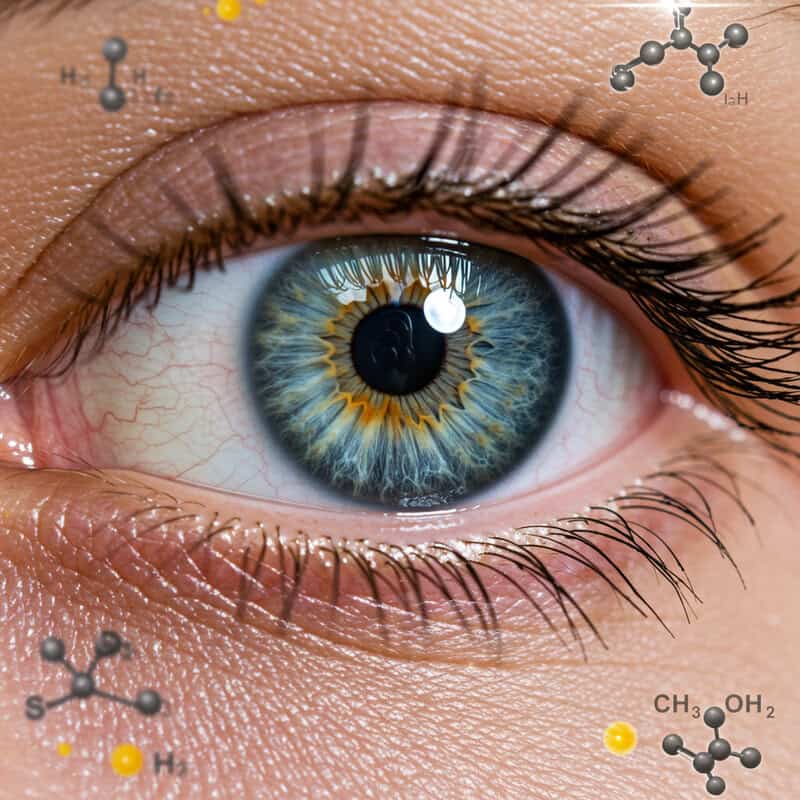
Sulfur is a crucial mineral involved in the synthesis of glutathione, one of the body’s most important antioxidants for eye health. Glutathione protects the lens and retina from oxidative stress, detoxifies harmful compounds, and supports the overall resilience of ocular tissues. The availability of sulfur-containing amino acids such as cysteine and methionine is essential for maintaining high glutathione levels in the eye, thereby reducing the risk of cataracts and other degenerative eye disorders.
Comparisons of dietary patterns, as noted by the National Institutes of Health, show that populations consuming diets rich in sulfur-containing vegetables and proteins have better antioxidant defenses and a lower incidence of age-related eye diseases. In contrast, sulfur-deficient diets may compromise glutathione production and leave the eye more vulnerable to oxidative injury.
Cruciferous vegetables such as broccoli, Brussels sprouts, cauliflower, and cabbage are among the top sources of dietary sulfur. Other sources include garlic, onions, and eggs. Regularly incorporating these foods into meals supports the body’s natural antioxidant systems and helps safeguard long-term eye health. For more information, visit the All About Vision guide on sulfur and vision.
35. Polyphenols
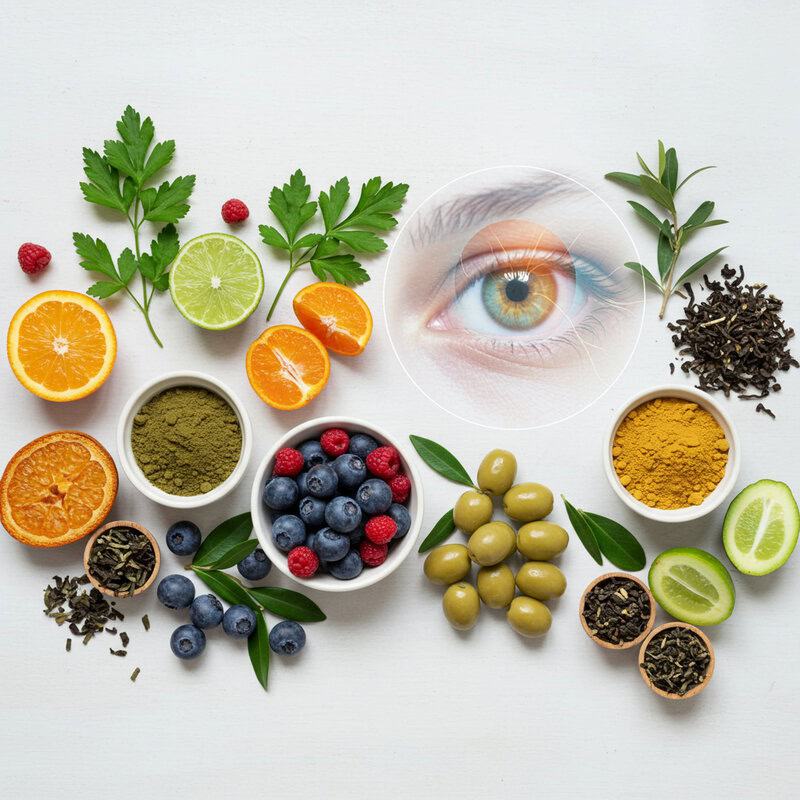
Polyphenols are a diverse group of plant-derived compounds well known for their potent anti-inflammatory and antioxidant properties, which can significantly benefit eye health. By neutralizing free radicals and reducing inflammation, polyphenols help protect delicate ocular tissues such as the retina and lens from oxidative stress, a major factor in the development of age-related macular degeneration (AMD) and cataracts.
Research highlighted by the National Institutes of Health demonstrates that regular consumption of green tea, a beverage exceptionally rich in catechins (a subgroup of polyphenols), is associated with reduced incidence of eye diseases linked to oxidative damage. Green tea polyphenols are absorbed into ocular tissues, where they enhance antioxidant defenses and support microvascular health. In addition to green tea, dark chocolate containing high levels of flavonoids has also been shown to offer vision-supportive benefits by improving retinal blood flow and overall eye function.
For optimal intake, consider enjoying several cups of green or black tea per week and incorporating moderate amounts of dark chocolate with a high cocoa content into your diet. These enjoyable habits can help boost polyphenol consumption and provide lasting support for ocular health. For more details, visit the All About Vision nutrition guide.
36. Astaxanthin

Astaxanthin is a powerful carotenoid antioxidant, recognized for its unique molecular structure that allows it to span cell membranes and provide robust protection against oxidative stress. This nutrient is far more potent than many other antioxidants, including vitamin E and beta-carotene, in neutralizing free radicals that threaten the delicate tissues of the eye. Astaxanthin’s ability to cross the blood-retina barrier means it can directly support retinal health and help prevent conditions such as age-related macular degeneration and eye fatigue.
Studies cited by the National Institutes of Health have found that populations with higher consumption of wild-caught salmon and other red-hued seafood—natural sources rich in astaxanthin—enjoy a lower incidence of retinal degeneration and improved visual performance. Clinical trials indicate that astaxanthin supplementation may reduce eye strain and inflammation, particularly among individuals with high visual demands, such as those who spend extended hours at digital screens.
To harness the benefits of astaxanthin, consider including red seafood such as wild salmon, trout, shrimp, and krill in your diet. These foods not only support eye health but also provide additional nutrients beneficial for overall wellness. For further reading, visit the All About Vision resource on astaxanthin and vision.
37. Curcumin
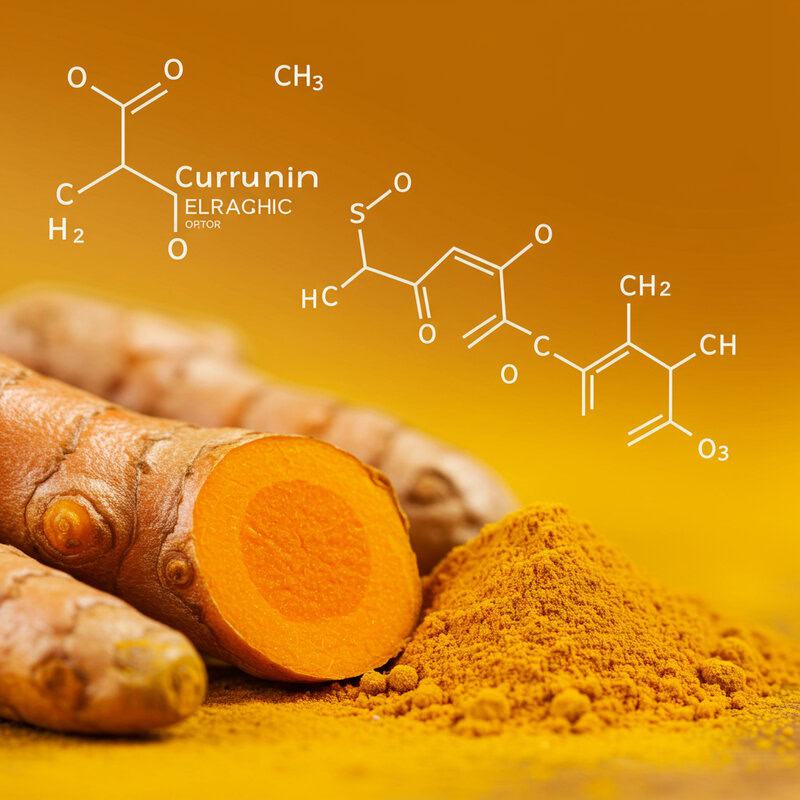
Curcumin is the primary active compound in turmeric and is renowned for its potent anti-inflammatory and antioxidant properties. Curcumin can help modulate inflammatory processes in ocular tissues, making it a promising nutrient for supporting eye health, particularly in conditions characterized by excessive inflammation. Its ability to inhibit inflammatory mediators and oxidative damage contributes to the protection and preservation of retinal and uveal tissues.
Studies reviewed by the National Institutes of Health have shown that curcumin supplementation may be beneficial for individuals with uveitis, a serious inflammatory eye disorder that can lead to vision loss if left untreated. Research indicates that curcumin can help reduce eye inflammation and support the healing process, offering a potential adjunctive or alternative therapy for those seeking natural approaches to ocular inflammation.
Incorporating turmeric into daily cooking is a practical way to increase curcumin intake. Turmeric can be added to curries, soups, rice dishes, and smoothies for both flavor and health benefits. Pairing turmeric with black pepper enhances curcumin’s absorption, making the combination especially effective for maximizing its bioavailability. For more information, visit the All About Vision guide on curcumin and eye health.
38. Resveratrol

Resveratrol is a polyphenolic compound renowned for its vascular protective effects, particularly in the context of eye health. By promoting the dilation of blood vessels and inhibiting oxidative stress, resveratrol supports healthy blood flow to the retina and choroid, which is essential for preventing age-related visual decline and conditions such as diabetic retinopathy and macular degeneration. Its anti-inflammatory properties further contribute to the maintenance of ocular microcirculation and cellular resilience.
Studies, including those referenced by the National Institutes of Health, have observed that populations with moderate red wine consumption—an abundant source of resveratrol—exhibit lower rates of vascular-related eye diseases. While red wine has gained attention for its resveratrol content, it is important to note that alcohol intake should be approached with caution, especially for those with health concerns.
For a safer and health-conscious approach, moderate intake of grapes, particularly red and purple varieties, can provide resveratrol without the risks associated with alcohol. Grape juice and berries, such as blueberries and cranberries, are also beneficial sources. Including these fruits in your diet regularly helps support vascular health and may protect against age-related vision loss. More information is available at the All About Vision resource.
39. Saffron
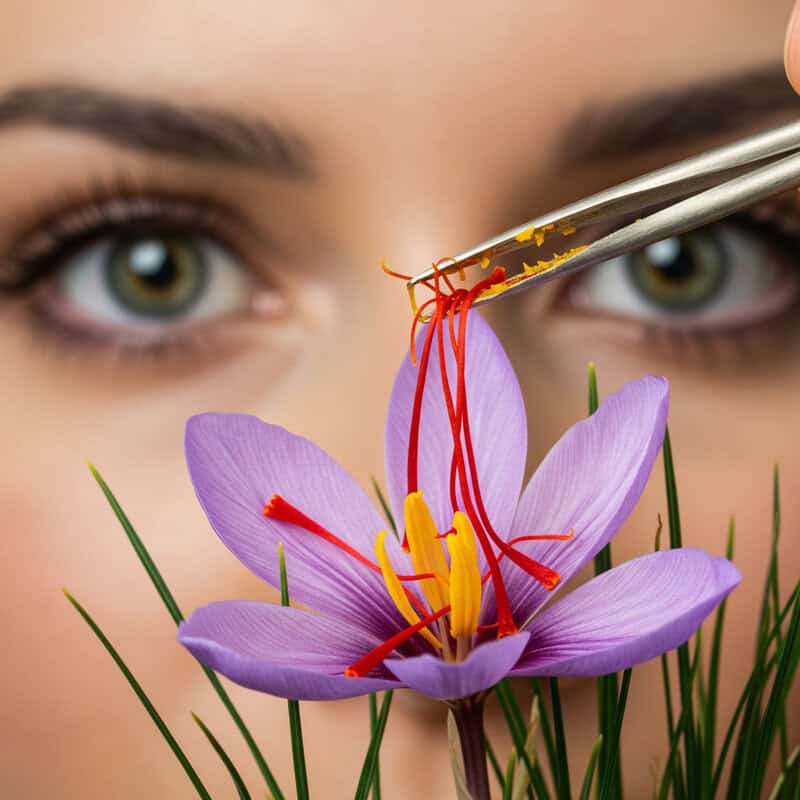
Saffron, the golden-hued spice derived from the Crocus sativus flower, has garnered attention for its unique antioxidant and neuroprotective properties, particularly in the context of vision health. Saffron contains active compounds such as crocin and safranal, which have been shown to enhance retinal sensitivity and protect photoreceptor cells from oxidative damage. These effects are believed to improve visual function and slow the progression of degenerative eye conditions.
Clinical trials, including those referenced by the National Institutes of Health, have demonstrated that saffron supplementation can improve retinal response and visual acuity in individuals with age-related macular degeneration (AMD). Participants in these studies experienced measurable improvements in retinal sensitivity and reported better quality of vision after using saffron, suggesting its potential as a natural adjunctive therapy for AMD and possibly other retinal disorders.
Due to its potent activity and high cost, saffron should be used sparingly in cooking. It can be added to rice, stews, or teas to impart flavor and health benefits. Even small amounts provide active compounds that may support eye health. For more information, visit the All About Vision guide on saffron and vision.
40. Coenzyme Q10

Coenzyme Q10 (CoQ10) is a fat-soluble compound essential for mitochondrial energy production in every cell of the body, including the metabolically active cells of the retina. By facilitating electron transport in the mitochondrial respiratory chain, CoQ10 ensures that retinal cells receive the energy needed for visual processing, cellular repair, and protection against oxidative stress. Its antioxidant properties also help safeguard ocular tissues against damage caused by free radicals and age-related degeneration.
Supplementation studies, as discussed by the National Institutes of Health, indicate that CoQ10 may help support retinal health and slow the progression of certain degenerative eye conditions, such as glaucoma and age-related macular degeneration (AMD). Research has shown that CoQ10 can enhance mitochondrial function, improve cellular resilience, and reduce oxidative injury in ocular tissues, offering promise for individuals at risk of vision loss.
Dietary sources of CoQ10 include beef, pork, fatty fish (such as sardines and mackerel), and organ meats like liver and heart. Small amounts are also found in nuts and some vegetables. Including these foods in your diet can help maintain healthy CoQ10 levels and support the energy needs of retinal cells. For more, visit the All About Vision guide on Coenzyme Q10 and vision.
41. Alpha-Lipoic Acid

Alpha-lipoic acid (ALA) is a versatile antioxidant that functions both in water and fat environments, making it highly effective in protecting various ocular tissues from oxidative stress. ALA plays a crucial role in regenerating other antioxidants, such as vitamins C and E, and supports mitochondrial energy metabolism, which is essential for the health of retinal and optic nerve cells.
Research summarized by the National Institutes of Health has highlighted the potential of alpha-lipoic acid in preventing and managing diabetic eye diseases, including diabetic retinopathy. Studies have shown that ALA supplementation can help reduce oxidative damage in retinal blood vessels, improve microcirculation, and delay the onset or progression of vision complications associated with chronic high blood sugar. Its ability to reduce inflammation and enhance the body’s antioxidant defenses makes it a promising adjunctive nutrient for individuals at risk of diabetic eye disease and other oxidative stress-related visual disorders.
Dietary sources of alpha-lipoic acid include spinach, broccoli, potatoes, and organ meats. While the body can synthesize small amounts, including these foods in your diet may provide additional antioxidant support for the eyes. For more information, visit the All About Vision guide on alpha-lipoic acid and vision health.
42. Carnitine
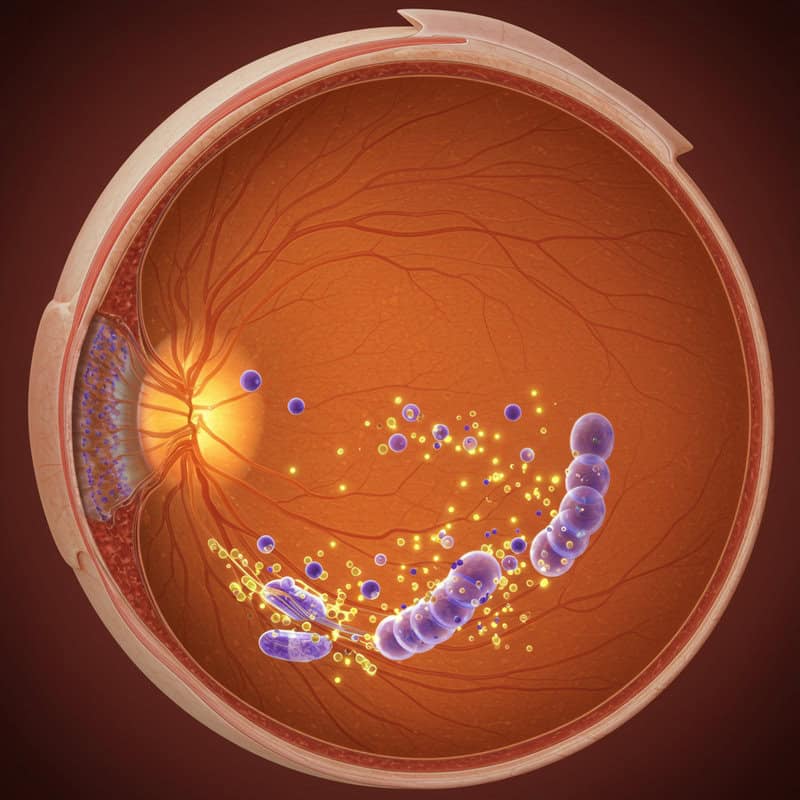
Carnitine is an amino acid-derived compound that is essential for the transport of long-chain fatty acids into the mitochondria, where they are oxidized to produce energy. In the energy-demanding cells of the eye—particularly in the retina and optic nerve—carnitine supports efficient fatty acid metabolism, which is crucial for maintaining cellular health, endurance, and optimal visual function.
Comparative research, as discussed by the National Institutes of Health, has shown that higher tissue carnitine levels are associated with improved cellular endurance and resilience, both in muscle and ocular tissues. Adequate carnitine levels have been linked to better visual performance and reduced susceptibility to metabolic stress in the retina, potentially delaying the onset of degenerative eye conditions. This nutrient is particularly important in situations of increased energy demand, such as prolonged screen time or visual strain, where optimal mitochondrial function is essential for sustained eye comfort and clarity.
Animal-based foods are the primary dietary sources of carnitine, with red meat, poultry, fish, and dairy products providing the highest concentrations. Individuals following vegetarian or vegan diets may have lower carnitine intake and should be mindful of their overall eye health. For more information, visit the All About Vision resource on carnitine and vision.
43. Probiotics
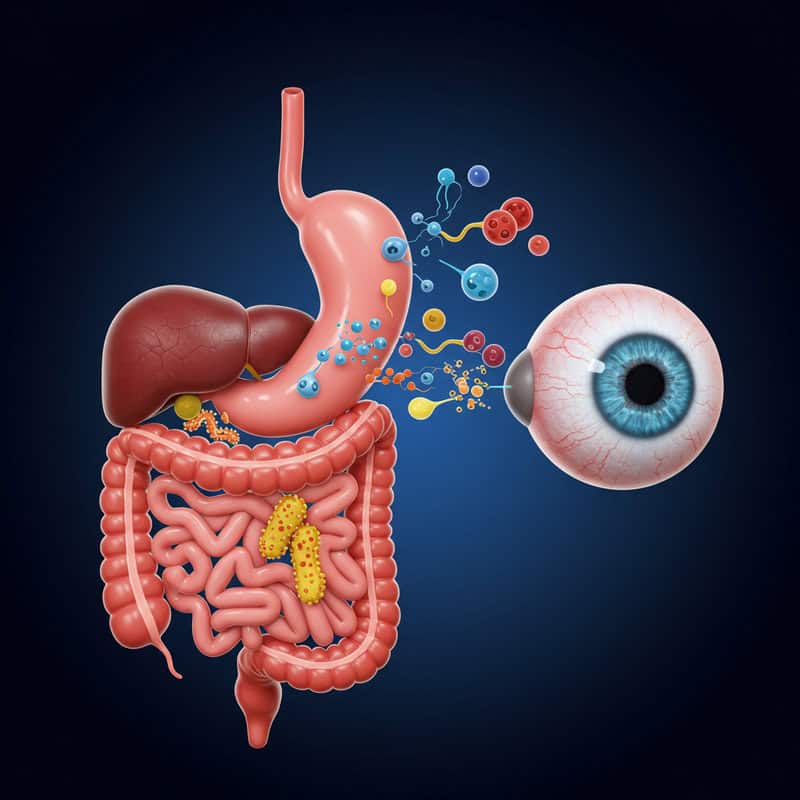
Probiotics are beneficial microorganisms that support a healthy gut microbiome, which is increasingly recognized as an important factor in systemic inflammation and immune regulation. The concept of the “gut-eye axis” refers to the communication pathway between the gut and ocular tissues, mediated by immune cells, metabolites, and inflammatory signals. Disruptions in the gut microbiome have been linked to increased systemic and ocular inflammation, which can contribute to the development of eye diseases such as uveitis, dry eye syndrome, and even age-related macular degeneration.
Recent research, as highlighted by the National Institutes of Health, has shown that probiotic supplementation can help reduce inflammation throughout the body, including in the eyes. By promoting a balanced gut microbiota, probiotics modulate immune responses and may lower the risk or severity of inflammatory eye disorders. These findings suggest that supporting gut health can have a direct, positive impact on ocular wellness.
Yogurt and kefir are among the best natural sources of probiotics, offering a wide array of beneficial bacterial strains. Other sources include fermented vegetables like sauerkraut and kimchi. Regular inclusion of these foods in the diet helps nurture the gut microbiome and supports the gut-eye axis for comprehensive eye health. More information is available from the All About Vision guide.
44. Vitamin B Complex
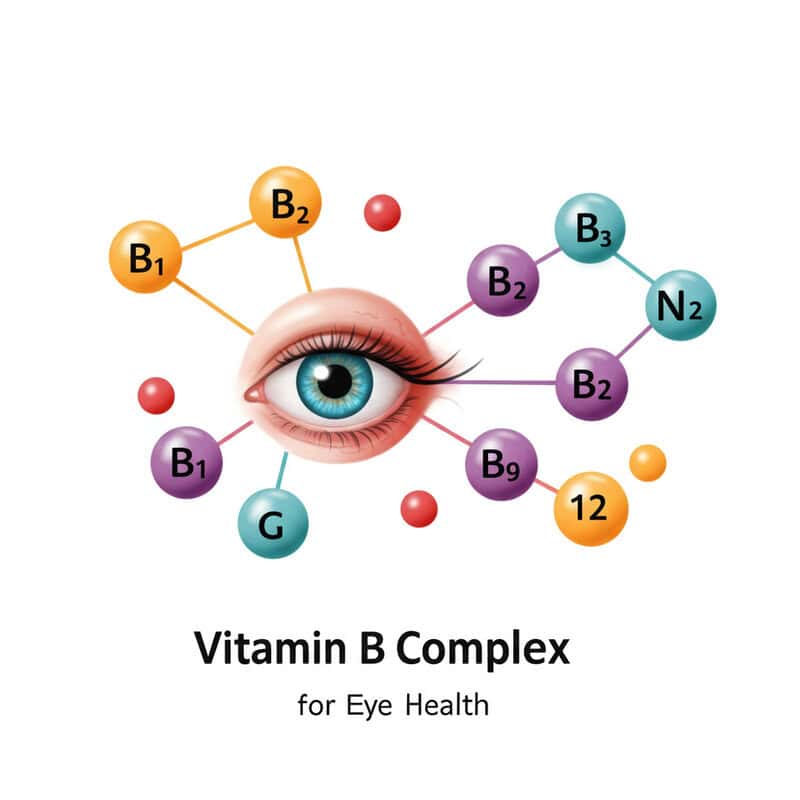
Vitamin B Complex refers to the group of eight essential B vitamins—thiamine (B1), riboflavin (B2), niacin (B3), pantothenic acid (B5), pyridoxine (B6), biotin (B7), folate (B9), and cobalamin (B12)—that work together to support various aspects of eye health. These vitamins play critical roles in maintaining healthy nerve function, protecting the optic nerve, supporting energy metabolism in retinal cells, and reducing levels of homocysteine, a compound linked to vascular disturbances that may affect the retina and optic nerve.
Comparative studies, including those referenced by the National Institutes of Health, have shown that individuals who regularly use multivitamin supplements containing B vitamins tend to have a lower incidence of certain eye conditions, such as age-related macular degeneration, cataracts, and optic neuropathy. The synergistic action of B vitamins in nerve protection and vascular support is believed to contribute to these benefits, highlighting the importance of an adequate and balanced intake of all B vitamins for comprehensive ocular health.
While a varied diet rich in whole grains, lean meats, dairy, eggs, legumes, and leafy greens usually provides sufficient B vitamins, balanced supplementation may be beneficial for those with dietary restrictions or increased needs. For more guidance, see the NIH Office of Dietary Supplements resource on B complex and eye health.
45. Protein

Protein is an essential macronutrient fundamental to the structure, repair, and regeneration of all body tissues, including those in the eyes. Proteins provide the amino acids necessary for the synthesis of collagen in the cornea, the maintenance of lens and retinal cells, and the creation of enzymes and antibodies that support ocular defense mechanisms. Adequate protein intake is therefore crucial for healing after eye injury, surgery, or infection, and for sustaining clear vision as you age.
Both plant and animal proteins can fulfill the body’s amino acid requirements, but there are important differences to consider. Animal proteins—found in lean meats, poultry, fish, eggs, and dairy—are considered “complete,” providing all essential amino acids in optimal proportions. Plant proteins, sourced from legumes, nuts, seeds, and whole grains, are often “incomplete,” but can provide a full spectrum of amino acids when eaten in variety. Studies, such as those summarized by the National Institutes of Health, indicate that both types of protein support ocular tissue health when included as part of a balanced diet.
To promote eye health, incorporate lean meats, fish, eggs, and dairy alongside legumes, beans, and whole grains. This diverse approach ensures optimal amino acid intake for tissue repair and maintenance. For more information, visit the All About Vision protein guide.
46. Water

Water is an indispensable nutrient for overall health and plays a particularly vital role in maintaining eye comfort, tear film stability, and the function of ocular tissues. Adequate hydration is crucial for the production of tears, which lubricate the surface of the eye, protect against infection, and ensure clear vision by washing away dust and debris. The tear film also contains essential nutrients and enzymes that nourish the cornea and conjunctiva, supporting their repair and integrity.
Dehydration has been directly linked to an increased prevalence of dry eye symptoms, including irritation, burning, blurred vision, and a sensation of grittiness. Research cited by the National Institutes of Health indicates that individuals with lower fluid intake are more likely to develop dry eye syndrome, especially in hot, dry, or air-conditioned environments that further accelerate tear evaporation. Chronic dehydration can exacerbate ocular surface disorders and delay recovery from eye injuries or surgeries.
To support optimal eye hydration, adults are generally advised to consume at least 8 cups (about 2 liters) of fluid daily, adjusting for activity, climate, and individual needs. Water, herbal teas, and water-rich fruits and vegetables all contribute to daily fluid goals. For more hydration tips, visit the All About Vision hydration guide.
47. Fiber
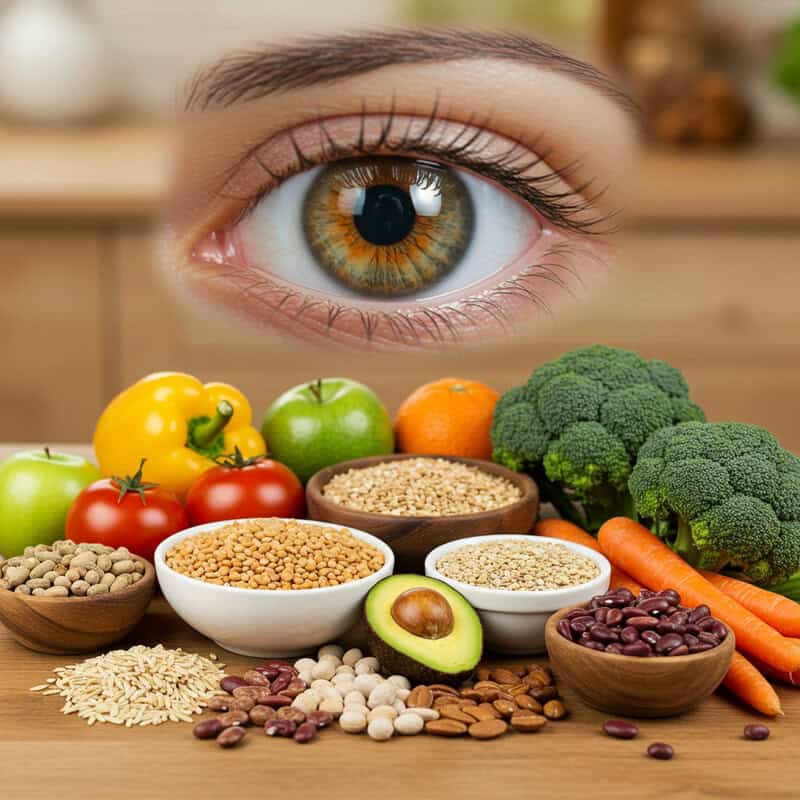
Fiber is a non-digestible carbohydrate found in plant-based foods that plays a crucial role in maintaining stable blood glucose levels and supporting metabolic health. By slowing the absorption of sugars in the digestive tract, dietary fiber helps prevent rapid spikes in blood sugar, thereby reducing the risk of diabetic complications such as diabetic retinopathy—a condition where high glucose damages the blood vessels in the retina and threatens vision.
Comparative studies, such as those referenced by the National Institutes of Health, have shown that individuals who consume high-fiber diets—rich in whole grains, legumes, vegetables, and fruits—demonstrate better glycemic control and a lower incidence of diabetic retinopathy compared to those with low-fiber, high-refined carbohydrate diets. Fiber-rich diets also support healthy gut bacteria, further contributing to reduced systemic inflammation and improved vascular health in the eyes.
To achieve recommended fiber intake, include whole grains (such as oats, brown rice, and barley), beans, lentils, and a variety of colorful vegetables and fruits in your daily meals. These foods not only support blood sugar regulation but also provide additional vitamins and antioxidants for comprehensive eye protection. For more information, visit the All About Vision fiber guide.
48. Carotenoids (General)

Carotenoids are a broad family of pigments found in plants, responsible for the yellow, orange, and red hues in many fruits and vegetables. While lutein and zeaxanthin are well-known for their roles in eye health, other carotenoids—such as beta-carotene, alpha-carotene, cryptoxanthin, and astaxanthin—also offer antioxidant protection and support visual function. These compounds help absorb excess light, neutralize free radicals, and protect ocular tissues from photo-oxidative damage, which can lead to age-related eye disorders.
Scientific reviews, including those summarized by the National Institutes of Health, indicate that higher dietary intake of a wide range of carotenoids correlates with a reduced risk of cataracts, age-related macular degeneration, and overall visual decline. The combined action of various carotenoids creates a synergistic antioxidant network within the eye, providing more comprehensive protection than any single nutrient alone.
To harness the benefits of carotenoids, aim for a colorful diet that regularly includes carrots, sweet potatoes, bell peppers, tomatoes, mangoes, and leafy greens. These foods not only enhance visual health but also support overall well-being. For more information, visit the All About Vision resource on carotenoids and vision.
49. Selenium-Enriched Yeast

Selenium-enriched yeast is a dietary supplement form in which selenium, an essential trace mineral, is bound organically within yeast cells, making it highly bioavailable and easily absorbed by the body. This form of selenium is utilized efficiently for the synthesis of selenoproteins and antioxidant enzymes, which play a critical role in protecting ocular tissues from oxidative stress, particularly in the retina and lens.
Supplementation studies, as discussed by the National Institutes of Health, have demonstrated that selenium-enriched yeast can increase blood selenium levels more effectively than some inorganic forms, such as sodium selenite. This improved absorption translates into better antioxidant protection, potentially lowering the risk of cataracts and age-related macular degeneration. However, research also emphasizes the importance of moderation, as excessive selenium intake can lead to toxicity and adverse health effects, including selenosis and potential vision changes.
If considering supplementation, it is advisable to consult with a healthcare professional to ensure safety and proper dosage, especially for individuals with existing health conditions or those already consuming selenium-rich diets. For more information on selenium-enriched yeast and its impact on eye health, visit the All About Vision nutrition guide.
50. Olive Oil (Polyphenols and Healthy Fats)
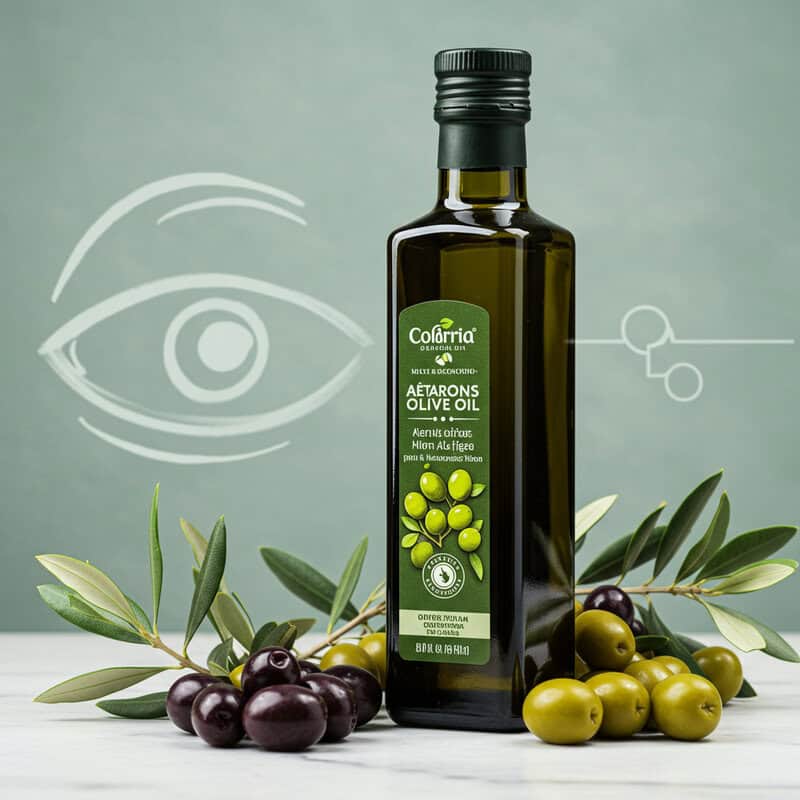
Olive oil is a cornerstone of the Mediterranean diet, valued for its rich content of monounsaturated fats and potent polyphenols. These healthy fats help support the structure and fluidity of cell membranes in ocular tissues, while polyphenols provide robust antioxidant and anti-inflammatory protection. This dual benefit helps maintain the health of the retina, lens, and blood vessels supplying the eye, reducing the risk of age-related visual decline and diseases like macular degeneration.
Comparative studies on Mediterranean dietary patterns, such as those highlighted by the National Institutes of Health, have shown significantly lower rates of age-related macular degeneration and cataracts among populations with high olive oil consumption. The combination of antioxidants, vitamin E, and healthy fats in olive oil is thought to work synergistically, enhancing the eye’s defense against oxidative stress and supporting long-term vision health.
For maximum benefit, use extra virgin olive oil for salad dressings, drizzling over cooked vegetables, or as a primary cooking fat in place of less healthy oils. This not only improves the flavor of meals but also delivers vital nutrients that help protect your eyes. For more information, visit the All About Vision guide on olive oil and vision health.
Conclusion
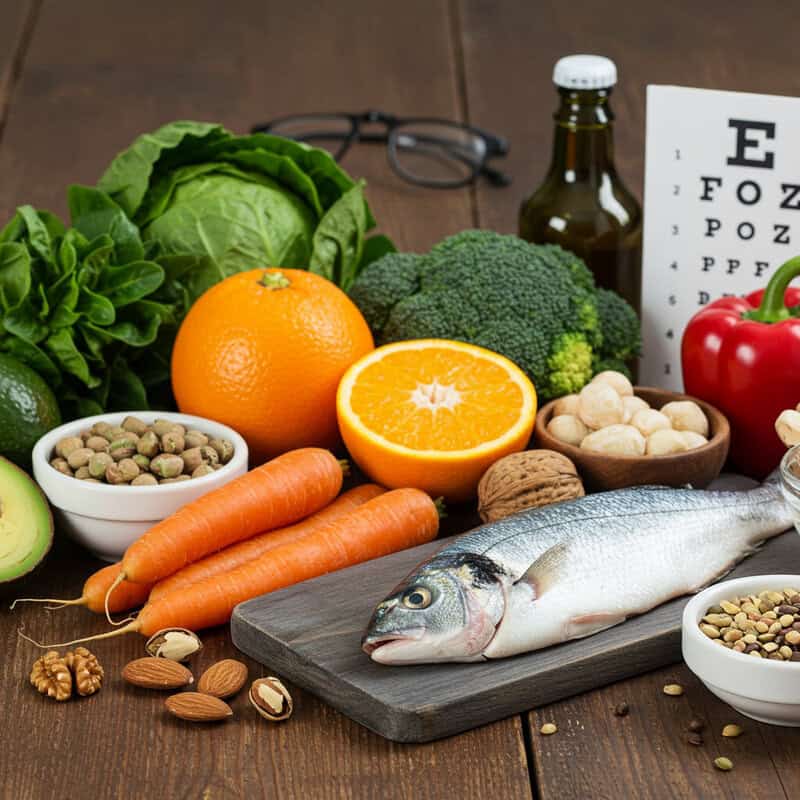
Protecting eye health is more urgent than ever as the global burden of vision impairment rises. Nutrient-rich diets provide a powerful, proactive approach to safeguarding sight, with a diverse range of vitamins, minerals, and antioxidants supporting every aspect of ocular function. By staying informed about nutrition and making mindful food choices, individuals can help reduce the risk of age-related eye diseases and maintain clear vision throughout life. Regular vision screenings, combined with dietary awareness, are essential for early detection and long-term eye wellness. For more information on prevention and care, visit the World Health Organization’s vision health resources.
Disclaimer
The information provided in this article is for general informational purposes only. While we strive to keep the information up-to-date and correct, we make no representations or warranties of any kind, express or implied, about the completeness, accuracy, reliability, suitability, or availability with respect to the article or the information, products, services, or related graphics contained in the article for any purpose. Any reliance you place on such information is therefore strictly at your own risk.
In no event will we be liable for any loss or damage including without limitation, indirect or consequential loss or damage, or any loss or damage whatsoever arising from loss of data or profits arising out of, or in connection with, the use of this article.
Through this article you are able to link to other websites which are not under our control. We have no control over the nature, content, and availability of those sites. The inclusion of any links does not necessarily imply a recommendation or endorse the views expressed within them.
Every effort is made to keep the article up and running smoothly. However, we take no responsibility for, and will not be liable for, the article being temporarily unavailable due to technical issues beyond our control.





